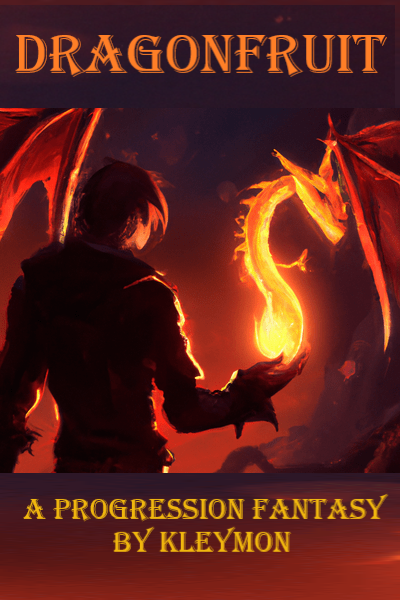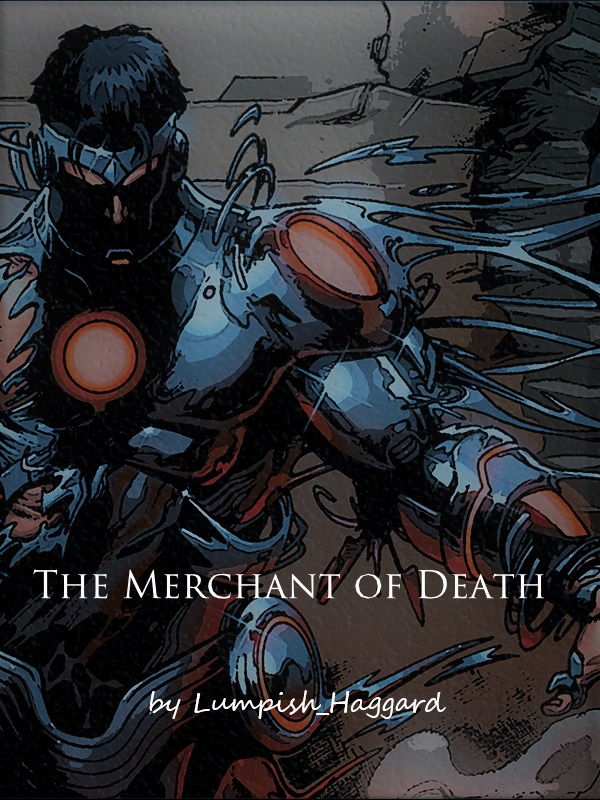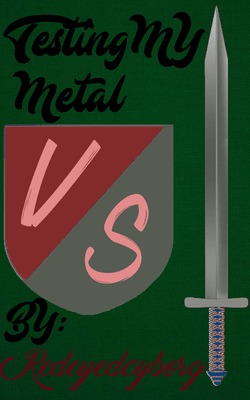This Auxiliary Chapter serves as the knowledge bank for the Hive World regarding the novel.
***(This chapter contains spoilers and may be updated anytime)***
Since the word “Hive Progenitor” or “Hive Mind” even most of the information regarding the hive world isn’t popularly known, if you know anything about the hive mind topics then it may not still be the same information that I will use to write the novel, therefore to alleviate some shortcomings this chapter aims to provide the details on terminologies the novel will be using.
(Some new information may not have been presented here, but rest assured that they will be explained at the same time.)
Hive Mind
A Species capable of functioning as a single group. Every member is connected to the Hive Progenitor by a magical strand (this strand acts as the bridge for the ‘Mind’ to spread its influence, but is sometimes connected to other drones or nodes depending on the specialization of the relay), this strand may be weakened over long distances but will never be broken. The drones may be separated by a certain distance and will still be fine, but if cut off from the Hive Mind by other means, the drone may fall comatose and die.
Members of the species are incapable of individualism or personal choices, for this species, there is no us, only the Mind. Members of the species act as the extension of the Mind becoming the limbs of a body or the tentacles of an octopus.
The Mind
The powerful Consciousness of the Hive. Members of the hive act as the hosts of this Consciousness, every action, every movement, are the actions of the Hive Mind, but no one can simply replace the home of this Consciousness, the Hive Progenitor. If killed or dies, the whole Consciousness crumbles and therefore triggers a seizure in all members eventually resulting in every member falling comatose and death.
The Hive
The Hive refers to the location and the drones of a Hive Mind species. It represents the place where the Hive Progenitor resides or the drones that embody this consciousness.
Sub Hive Mind
This allows the Hive Progenitor to delegate tasks and decision-making to foreign drones (a species that was infected with the ‘Blue Tear’ and didn’t originate from the Hive) capable of Full Autonomy, allowing the drone to practice limited freedom while under the influence of the Hive Mind despite the non-existence of individuality in a Hive Mind species.
This drone is under strict supervision and is only given to those who possess consciousness. That being said, the Hive Progenitor’s consciousness will occupy 60% of the drone’s cortex rendering it almost incapable of deviancy and giving the Hive Mind important functions to observe the drone’s body conditions, thoughts, intentions, actions, etc.
Hive Progenitor
The main body and soul of the Hive. He is the origin and everything of the hive. The existence of the hive is all but naught with the absence of the Hive Progenitor.
The Hive Progenitor possesses a special organ that allows the Progenitor to safely rewrite DNA strands preferably and can excrete those modified genes with a special gland located on both hands.
Synaptic Gene Modifier (SGM) – Organ
This organ is connected to the nervous system allowing the Progenitor to control DNA modification. This organ allows the Progenitor to modify and eventually create a new DNA strand or an “RNA”, a.k.a. “messenger RNA” or “mRNA”, it functions primarily as an order for the cell, depending on the purpose of the mRNA, it can be used for the Progenitor’s cell/s itself or for another organism’s cell/s.
This organ also produces and houses a virus called “Bacteriophage”. The Progenitor creates this virus so that it can infect the cells of other species or organisms. This virus is inspired by a virus found on Earth that is capable of locking on to a specific target cell. It is dormant when connected to an SGM cell ‘loading area’ and will wait there for the mRNA; if all spaces are used, other viruses will wait, and the SGM will not produce a virus unless an empty spot is available. After receiving the mRNA, the virus will travel to the Cyanolacrima Gland via the blood vessels. This organ consumes a fair amount of nutrients when modifying DNA or producing viruses, so it can’t be used indefinitely.
Cyanolacrima Gland (CLG) – a.k.a. “Blue Tear” Gland
This gland is connected to the nervous system allowing the Progenitor to control the excretion of the modified genes inside the bacteriophage or virus. Upon secretion, the gland simultaneously produces a bluish fluid protecting the virus from the external environment and from other organisms as well.
The ‘blue tear’ and the virus with it will dissipate for a few minutes or be removed deliberately.
A drop of blue tear results in a complete infection of the target, but requires to be introduced internally depending on the purpose of the virus. This process requires a supply of water and nutrients, so it can’t be used indefinitely.
The Blue Tear produces a faint glow, if under the dark you can clearly see the blueish glow of the Blue Tear.
Progenitor’s Nest
The home of the Hive Progenitor. All synapses originate in this single location and all synapses from the distant drones end up here. It can be said that this is the Central Processing Core of the Hive. Every Progeny Drone originated in this nest and was tended carefully by drones specialized for caring and nursing. All the ‘Nexus Nodes’ are located here, assisting the Hive Progenitor on various processing tasks respective to their specialty.
Drone
A member of the Hive specialized in a certain task, either complex (like specializing in research, mathematics, chemistry, engineering, evaluation, etc) or basic tasks (like gathering food, construction labor, domestic chores, mining, etc). All drones possess some degree of semi-automation, although it is expressed that they are somewhat autonomous they are still under the supervision of the Hive Mind. Note: Whatever a drone sees, the whole hive can also see.
Complex Drone
A drone that is capable of high levels of reasoning and problem-solving. They are the geniuses of the hive, although an advantage, they require a fair amount of nutrients to feed their brain.
Examples of Complex Drones:
– Engineer Drone (this drone specializes in the application of scientific and mathematical principles in developing solutions to technical problems, this drone can be assigned to other engineering fields and will require time to adapt to the work, but will be fine nonetheless)
– Medic Drone (this drone is assigned to tending to injury, wounds, and surgery. This drone is also assigned to nursing patients and the young. This drone is also a support drone in away missions)
– Calculator Drone (this drone specializes in numbers and equations, this drone assists other drones in mathematics, this drone is also tasked with discovering new equations)
– Chemist Drone (this drone produces chemicals for the hive using laboratory equipment, this drone specializes heavily in chemistry and research)
– Evaluator Drone (this drone functions as an inspector, always examining every synapse from drones of deviancy and corruption, and is capable of issuing isolation of those synapses, not allowing other drones to receive those synapses until the transmitting drone is fixed or restored. This drone is also a support drone in away missions)
– Overseer Drone (this drone functions as a vice-supervisor of the hive, it is below the Progeny Drone and is usually sent in missions requiring oversight that a Progeny Drone cannot be sent into. This drone is also a support drone in away missions)
– Brain Drone (this drone is the combination of a scientist, researcher, and an inventor, although expressed as a combination of the three, it can only do one job at a time. This drone is also a support drone in away missions like exploration or espionage)
– Synapse Drone (this drone functions as a direct radio relay from the Hive Progenitor, it amplifies the ceaseless synapse or “voice” of the Mind, analyzing it and cleaning it from distortions. This drone is also a support drone in away missions)
– Progeny Drone (an immediate child of the Hive Progenitor, inheriting the Progenitor’s capabilities of making drones, and supervising other drones. It is below the Hive Progenitor and does not gain independence from the Mind, just assists the Hive Progenitor. This drone is a strategic asset as it can make new drones, if fallen to deviant drones, they may use it for their needs, usually pressuring it (the Hive Progenitor) to produce another Hive Progenitor and gain their independence)
Basic Drone
A drone that specializes in menial tasks, does not possess high levels of reasoning and is incapable of solving complex problems but is still able to solve basic to intermediate problems.
Example of Basic Drones:
– Constructor Drone (this drone specializes in construction works, and handles the labor in the creation, maintenance, and repair of the infrastructure)
– Miner Drone (this drone extracts minerals, ores, and other valuable materials from the soil. This drone is also responsible for the creation, maintenance, and repair of the tunnel, they are also able to operate mining equipment)
– Farmer Drone (this drone engages in the practice of agriculture, which involves cultivating crops and raising livestock for food, fiber, and other products)
– Sanitation Drone (this drone is responsible for collecting and disposing of waste materials. This drone is vital for maintaining the hive’s health and cleanliness)
– Warrior Drone (this drone is responsible for defending the hive from foreign adversaries, this drone is also capable of away missions on foreign territories, (e.g., exploration, invasion, security assistance, peacekeeping, etc.) although requires some additional support drones (i.e., Overseer Drones, Evaluator Drones, etc.))
– Sentinel Drone (this drone is responsible for ensuring the security and safety of drones, working in tandem with evaluator drones to catch deviant drones and stop them. This drone is also a support drone in away missions)
– Maintenance Drone (this drone is responsible for the maintenance of all infrastructures and equipment, assists constructor and miner drones in their maintenance works, and focuses mainly on other areas where no one was assigned to maintenance works)
– Technical Drone (this drone is specialized for operator and technician works, and handles blacksmithing, refining, etc.)
Drone Automation
This allows the Hive Progenitor to practice minimal intervention and focus on high-priority tasks. This involves training neural networks, providing information, and processing power to execute repetitive, complex, or routine activities efficiently and accurately.
Levels of automation can vary in 2 degrees: Semi-Automation and Limited-Automation.
Where semi-automation involves a higher degree of automation. It integrates the automated drone with the supervising drone’s oversight, where the majority of tasks are automated, but high-level intervention from the Hive Progenitor is still necessary for decision-making, exceptions, and supervision.
Compared to semi-automation, limited-automation involves automating specific tasks or steps within a process, but not the entire process. In this level of automation, the supervising drone regularly issues interventions to manage, monitor, and complete the overall task.
Semi-Autonomous Drone
This drone is capable of some degree of decision-making and problem-analysis; though disadvantageous and potentially resulting in deviancy, it allows the drone to solve problems requiring immediate solutions that take time to reach the nest. This level of automation is applied to heavily specialized drones (like complex drones).
This type of drone possesses a high-level of specialization and is suitable to be used in away missions like infiltration and espionage missions in foreign territories.
This kind of drone still requires oversight and constant inspection but is still within the scope of the Hive Mind.
Limited-Autonomous Drone
This level of automation allows a drone to accomplish its task without the Hive Progenitor’s regular intervention (that is if the drone is able to execute the task well within its function, capability, and specialization). A Semi-Autonomous Drone will usually require constant intervention from overseer drones and progeny drones, and rarely from the hive progenitor, if the task is finely executed throughout the process the results will be sent back to the hive progenitor. This level of automation is applied to lightly specialized drones (like basic drones).
Specialized Drone
This drone’s brain is trained to work efficiently and effectively in their respective fields. This drone is carefully cared for by the hive’s medical drones to decrease the chances of deviancy when reaching adulthood.
Synapse
This is the form of message or the voice of the Hive Mind (the Hive Progenitor) echoing throughout the heads of the drones in the hive. Although the speed is faster than light, there were events when it really took a moment to be received, especially in drone-to-drone and node-to-drone communication.
Node
A node operates similarly to a brain, it processes and stores information way faster and more efficiently energy-wise than a classical computer. A node may vary in size depending on the function of the node and the stored information. A node that is freshly made would look like an orange. The node’s exterior is similar to a smooth glass, inside is a black liquid, and you can see tiny sparks inside.
All nodes are connected by a fiber or a thick connection which vary in size depending on how much synapse travels between. Nodes connected with a fiber can communicate to another node instantly, than when no connection is involved.
All nodes consume a fair amount of nutrients to power their functions and require a vein to be connected to receive the nutrients and store them for later use, which is useful.
Nexus Node
This node operates as a sub-central processing unit of the hive. Each node can be used to handle certain tasks respective to their fields. This alleviates the burden for the Hive Progenitor to prioritize tending to functions in the hive requiring high-level permissions. Note: This node is also similar to a graphics card of a computer but is a supercomputer itself.
Synaptic Node
This node operates similarly to a radio relay, the more synaptic nodes clustered to each other the faster they can inspect the message for deviancy and corruption. This node requires nutrients and maintenance from specialized drones.
This node is incapable of movement but can be on away missions and acts as a radio transmitter and receiver as well, considering that it is maintained carefully by specialized drones and kept isolated from dangerous environments (i.e., extreme temperatures, physical damages, etc.).
Ephaptic Node
This node specializes in relaying the synapse or “voice” of the Mind (the Hive Progenitor) throughout the hive and transmitting important information back to the Progenitor’s Nest as a high priority. This node is sensitive and delicate to external forces and cannot be used in away missions, as sudden movements negatively affect the processing of information.
Deviant Drones or Deviancy
This refers to behaviors that violate the norms, values, or expectations of the Hive Mind. Deviant Drones are no longer listening to the Mind and will potentially target other drones to influence them and may start their own Hive if ever they were able to get hold of a Progeny Drone. Deviancy may also be caused by a mutation in the Balmoral Organ resulting in deviancy.
To decrease the chances significantly, the hive carefully cares for the young, all mutated drones are either euthanized (if the problem is irreversible) or proceed to a brain reset (all memories and the DNA of the drone will be repaired).
The Balmoral Organ
This organ is where the strands of each drone are anchored. It can also be said that it is their antenna, both for transmitting and receiving information. Every drone and the Hive Progenitor have the Balmoral Organ. This organ is located in the top middle of the brain. On Earth, it is generally known as the “Mooring Bollard” for ships.
The absence of this organ can lead to problems for the hive, a very big problem.
The Origin Tree
This is the visual representation of the magical strand that connects all drones to the Hive Progenitor. The base represents most of the Progeny Drones, and the body and the branches represent the other drones of the hive branching outward.
Growth Vat
This functions as the womb of the hive, all drones are made in this biological container. The gestation time usually takes 1 week to fully grow into a healthy drone and will look like a 3-year-old baby. The baby drone will be taken care of by a medic drone until it can support itself.
The initiation for gestation can be triggered by the Hive Progenitor or by a Progeny Drone, they can alter the genes for the drone’s identity and capability, either as a complex drone or as a basic drone, for the Hive Progenitor it can alter the DNA into whatever he wants.
Corruption
For a Hive Mind, it is the unintentional alteration, damage, or destruction of data. This corruption can make the information unreadable, unusable, or inaccurate. Data corruption can affect the memories, drone and node functions, and hive networks, leading to a variety of problems for the Hive.
Mutation
This is the change, insertion, or deletion in single or multiple parts of the DNA, commonly known as “nucleotide” (the parts). Minor mutations don’t entirely disrupt the total intended result of the DNA, which results in little to no impact at all. Major mutations, however, result in a totally different outcome from the intended result, like ‘peaches instead of apples’. This is the real big problem for a Hive Mind, although it depends if it is a negative mutation or a positive one.











